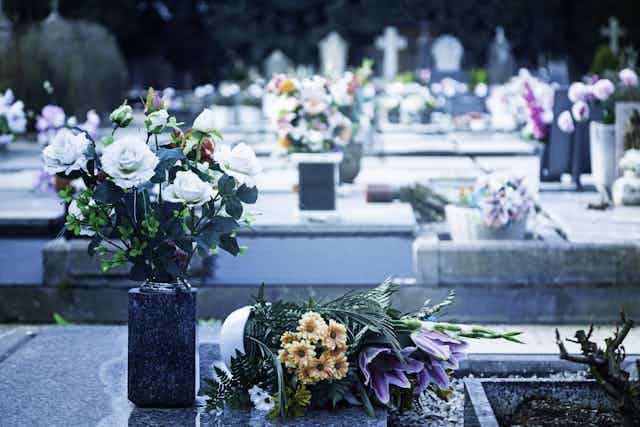For those who have lost their loved ones, social media platforms can allow for RIP memorials, and for recreating memorable visual and audio collections that keep those who have passed away alive in our imaginations.
In fact, digital immortality/virtual immortality that escapes the constraints of time and space is a hot commodity. From mobile apps that allow people to create digital avatars that can look and sound like your deceased best friend to those that allow you to relive shared memories through photographs, video clips and favourite tunes, your beloved remains present in your life. You can tell the digital avatar of your mother, who passed away before getting a chance to watch your children grow up, about the play your son is in or your daughter making the honour roll.
For the past six months, I have been examining the importance of virtual graveyards with a group of graduate students. We are looking at the significance of these virtual sites for marginalized identities in Canada. Virtual graveyards and cyber-memorial sites have become increasingly commonplace on the web.
This kind of technology can help people through the grieving process — and help with the healing after a great loss. Indeed, neuroscientists have argued in favour of such technologies, suggesting that social networking sites like Facebook can help with the grieving process.
Valuable national assets
Yes, these are graveyards in cyberspace and they function much like the cemeteries in real life, with one exception — you can go there at any time and from any place.
Thinking about Canada hundreds of years from now, what would such sites reveal about the everyday contributions of the country’s inhabitants? What stories of the nation could these sites tell us? As repositories that memorialize stories of common people leading common lives, virtual graveyards are potentially invaluable to historians and others seeking to understand the past.
What adds to their value is that they are accessible. For marginalized communities, printed obituaries may be inaccessible, structured as they are by criteria that demand remarkable personalities performing extraordinary feats or making singular contributions to the country; or, alternatively, notorious individuals whose deaths need to be publicized so as to appease our sense of a restored and balanced social order. Online memorials allow for a memorialization of the deceased in a public way, generating a sense of community.
A virtual community healing
These sites represent a shift in traditional rituals around death. Therapists are now recognizing that mourning does not end after one month or a year, but is rather ongoing, reflecting our continued attachment to friends and family after they have passed. Cyber-memorials and virtual graveyards assist with the healing process by providing space for ongoing grief.
In contrast to printed obituaries, which tend to be more descriptive rather than emotional, these virtual graveyards offer people a means to commemorate their loved ones in a less restricted way. We can write about our father’s unpublished poetry or our sister’s generosity — and more importantly, how much we love and miss them. We can celebrate their everyday lives and role in our communities.
Following the tradition of leaving tokens at a grave, these sites allow users to place virtual flowers or light candles for the deceased. One can upload pictures, video clips, songs, or a poem. By allowing mourners to interact with others who knew the deceased, or who are also grieving, these sites also provide the potential for building community support during the grieving process — providing some relief from the pain of loss.
The costs of virtual graveyards
But these sites come at a price. It may be the invasion of privacy in the vein of Facebook using personal photographs posted by users for its sponsored stories content. The emotional cost could also be the constant reminder of loss, or confronting visual memories that are assembled in such a way as to focus primarily on positive and loving memories instead of addressing the pain and suffering one experiences while grieving. Add to this, the issue of ephemerality: sites are notorious for their temporary nature, here today and gone tomorrow. Your memorial could vanish within minutes.
The economic costs are also factors to be considered. Most virtual graveyards charge at least $50 a year and sometimes more. There are few Canadian sites that offer such services for free, and if they do, they are often tied to other economic costs related to death rituals, such as funeral costs.
On the plus side, though, these sites are accessible to those who are literate in the ways of the Internet.
Should the sites survive, they’ll offer an archival treasure trove for those looking to see how ordinary people lived their lives and contributed to society. They could be a window into how marginalized groups lived, loved and struggled.
In that vein, virtual graveyards afford us an opportunity to reject a past based on erasure and ignorance. In Canada’s future, they could become invaluable national assets that should be supported, but only if they are freely available to their users and regulated in the best interests of all people.

